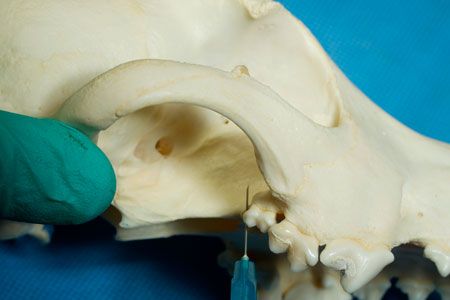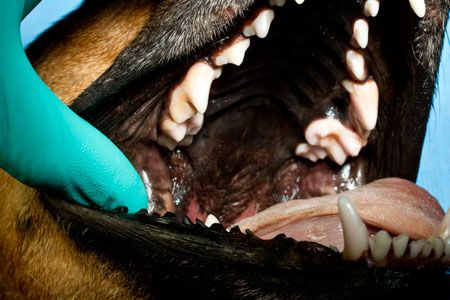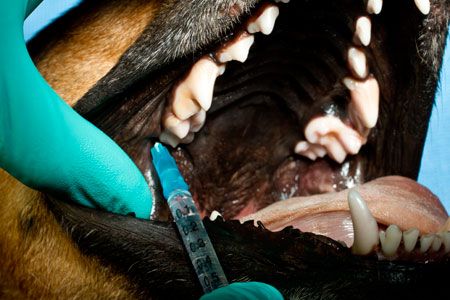Caudal maxillary (maxillary) regional block
This blocks the bones, teeth, and soft tissues of the upper jaw.
Next >
This block affects the branches of the maxillary nerve-the infraorbital nerve, the pterygopalatine nerve, and the major and minor palatine nerves.1 Structures that are blocked include the bones, teeth, and soft tissues of the upper jaw, including the bones of the hard palate and the soft and hard palatal mucosa on the corresponding side.
Step 1

Use a skull to visualize the needle placement caudal to the maxillary second molar.
REFERENCE
1. Beckman BW, Legendre L. Regional nerve blocks for oral surgery in companion animals. Compend Contin Ed Pract Vet 2002;24:439-444.
Step 2

To perform the maxillary block, open the patient's mouth, and retract the lip commissure caudally.
< Back
Step 3

Advance the needle in a dorsal direction perpendicular to the plane of the palate, penetrating the mucosa directly behind the palatal and distobuccal roots of the maxillary second molar tooth. The needle does not need to be advanced more than 3 to 5 mm beyond the mucosa, depending on the patient's size.